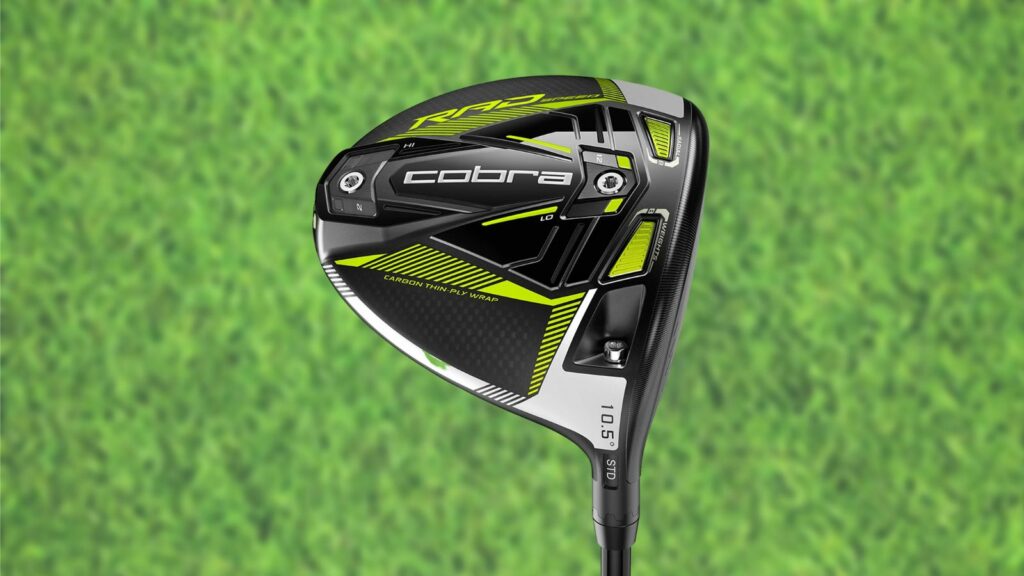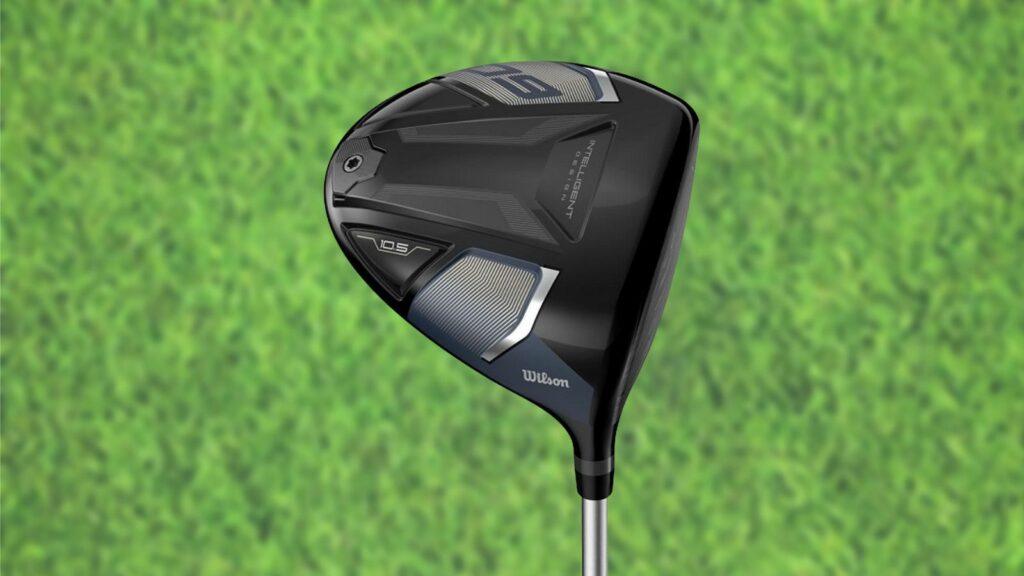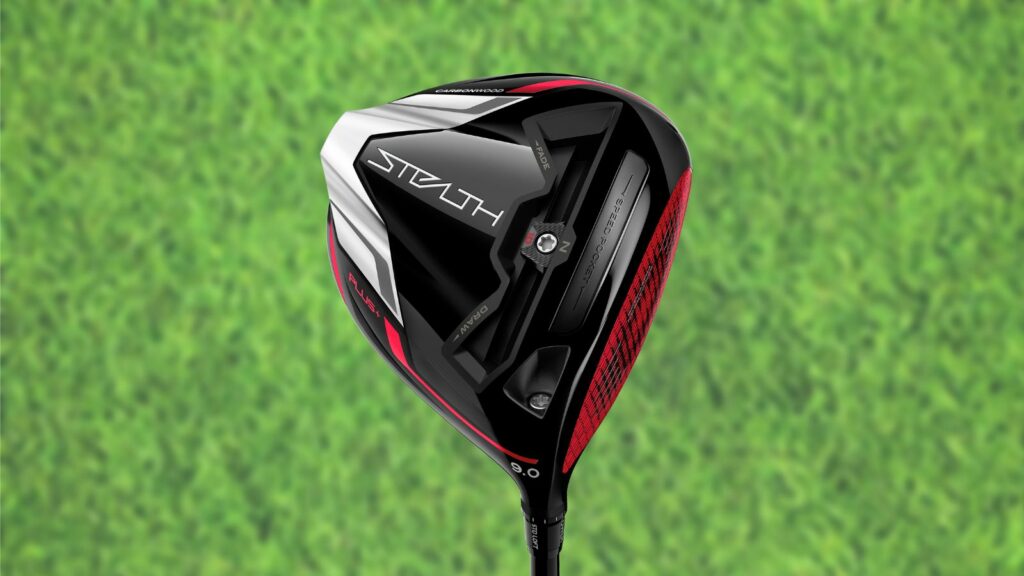Discovering that your trusty driver head cracked can be a gutting experience.
Before rushing to get a replacement, it’s worth understanding what causes these cracks and whether you can still hit the fairway with a broken driver head.
Sustained use over time, high swing speeds, and defects may be to blame.
In general, hairline cracks likely won’t alter performance. But, major fractures can impact performance. This will harm your distance and accuracy off the tee.
Read on to learn if you can use a cracked driver head, or if it’s time to upgrade.
Driver Head Cracked
The driver head can crack as a result of heavy usage, higher swing speeds, or manufacturing defects. Cracks can be identified by a change in sound or ball flight. Hairline cracks are unlikely to affect performance. However, longer and deeper cracks can alter the driver’s properties and negatively affect performance.

What Causes a Driver Head to Crack?
While there are a number of variables impacting the possibility of your driver head becoming cracked, there are three main factors to consider:
- Heavy usage
- Swing speed
- Faulty units
Each of these factors can be responsible for damage sustained to the driver head.
Heavy Usage
The most common reason for a cracked driver head is heavy usage — specifically the sustained use of the club over a long period of time.
While most golf club manufacturers will perform lots of testing, if the driver is used frequently for several years it will likely affect its durability over time.
Likewise, using the driver in colder temperatures can cause additional stress to the driver head. Frozen golf balls will compress less at impact, risking a driver crack.
The average clubhead speed for amateur golfers is around 80-90 mph. This repeated high-speed contact with a hard golf ball can result in damage.
Swing Speed
The average clubhead speed for amateur golfers is around 80-90 mph.
If your swing speed is above average, the clubhead will experience more force at impact with the golf ball.
This repeated high-speed contact with a hard golf ball puts the clubhead under significant stress and can potentially cause cracks.
Faulty Units
Finally, in some cases, the driver head might simply be a defective unit.
Fortunately, many of the top brands offer a two-year warranty for golf clubs. So, if you purchased your driver in the past 2 years you’re likely to be covered by this.
As part of this guarantee, the manufacturer will either repair or replace the driver head, depending on the severity of the crack.

How to Tell If Your Driver is Cracked
In short, there are two common ways to diagnose a cracked driver head:
- Change in sound
- Change in ball flight
If you’ve noticed either of these happening with your driver, there’s a good chance that the change has come as a result of damage to the clubhead.
Change in Sound
Firstly, the most obvious way to tell if your driver head has become cracked is by the sound it makes after impact with the golf ball.
A cracked driver will often sound either louder or quieter than usual, depending on where the crack occurs on the clubhead.
So, if you recognize a sudden change in sound when hitting your driver, take a close look at the head to find any potential external cracks.
Change in Ball Flight
Another way to recognize if the driver head has cracked is by a change in ball flight.
The ball will tend to move strangely or drop out of the air sooner if the driver head is cracked, resulting in a loss of distance.
Therefore, if you’re noticing a drop in distance off the tee without changing your swing, this could be a result of a crack in the driver face.

Can You Change a Cracked Driver During a Round?
According to USGA rule 4.1b(3), players are not allowed to replace a damaged club, except when it is damaged during the round by an outside influence or natural forces.
However, the word damaged is subjective. The rule was modified in 2019, with the USGA stating that a club must be “broken or significantly damaged” to be replaced.
The rule declares that clubs can be considered “broken or significantly damaged” if the shaft breaks (but not just dented); the clubface is visibly deformed (but not just cracked or scratched); the clubhead is significantly deformed or detached, or the grip is loose.
A player is not allowed to replace a club if there is only a crack in the clubface or clubhead.
This is controversial. In August 2019, professional golfer Webb Simpson’s driver face became cracked on the third hole during the second round of the Northern Trust. As a result of rule 4.1b(3), Simpson wasn’t permitted to use his backup driver and had to use either his 3 wood or the damaged driver for the rest of the round.
Can You Use a Cracked Driver Head?
So, how does a cracked driver head affect performance?
If your driver isn’t covered by warranty, you might be wondering if a cracked driver head will have any effect on performance on the golf course.
Hairline cracks are unlikely to affect performance. By contrast, longer and deeper cracks that are clearly visible can alter the driver’s properties and negatively affect performance.
So, if your driver is suffering from a fairly noticeable crack, it’s probably time for an upgrade.
Luckily for you, we’ve rounded up the best drivers for amateur golfers in this article. Read on to find the perfect driver for you!

Best Drivers For Amateur Golfers
If your driver has hit the end of the road, it’s time for an upgrade! Below, we’ve compiled our three favorite drivers right now for amateur golfers:
Cobra Radspeed Driver – Best Overall
Cobra Golf was founded in 1973 and has grown to become one of the major brands in the golf space. Now owned by Puma, the brand is commonly used by professional golfers and amateurs alike.
The Cobra Radspeed Driver is an excellent pick for golfers of any level. It features adjustable head weights, great forgiveness, and a premium design, all at an affordable price point.
A CNC-milled infinity edge design expands the milled area of the face by 95%, providing a larger zone of maximum ball speed for optimal forgiveness.

Reasons to Buy
- Excellent forgiveness
- Affordable and great value for money
- Lower spin rate for extra distance
Reasons to Avoid
- Unique high-pitched impact sound
Rating: ★★★★★
>> You can order your Cobra Radspeed Driver here
Wilson Staff D9 Driver – Best Value
Although not regarded as a premium brand in golf, Wilson has been manufacturing golf clubs and equipment since 1914.
The Wilson Staff D9 Driver is an excellent budget pick for amateur golfers who are looking for a forgiving and good-looking driver.
A three-layer composite crown made from kevlar and carbon fiber works to reduce vibration for a solid feel and satisfying acoustics.

Reasons to Buy
- Lots of off-center forgiveness
- Nice sound at impact
- Good price and value
Reasons to Avoid
- Limited shaft options
Rating: ★★★★☆
>> You can order your Wilson Staff D9 Driver here
TaylorMade Stealth Driver – Best Premium
Having manufactured golf clubs for over 40 years – and sponsoring many tour pros in the process — TaylorMade has grown to become one of the industry’s largest brands.
The TaylorMade Stealth Driver is the brand’s premium offering. The face is encased by a polyurethane cover, featuring a revolutionary new nanotexture technology that fine-tunes launch and spin to optimize distance.
Weight-savings on the face allow for more weight to be positioned low and deep in the head, adding up to 15% more MOI than similar models.

Reasons to Buy
- Very strong overall performance
- Beautiful, timeless design
- Powerful feel and good sound
- Draw bias will suit those who slice the ball
Reasons to Avoid
- Expensive price point
Rating: ★★★★★
>> You can order your TaylorMade Stealth Driver here
Conclusion
In conclusion, the driver head can become cracked as a result of heavy usage, high swing speeds, and manufacturing defects.
The best way to know if your driver head is cracked is by recognizing a change in impact sound as you strike the ball — or a change in ball flight.
Hairline cracks are unlikely to affect performance. However, longer and deeper cracks can alter the driver’s properties and negatively affect performance.
If you’ve got a significantly broken driver head, it’s time for an upgrade!


